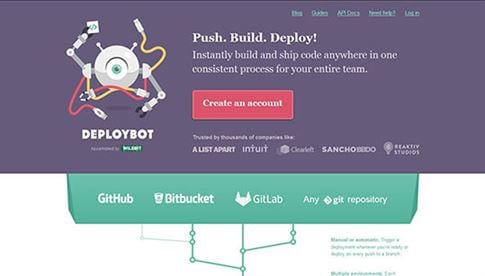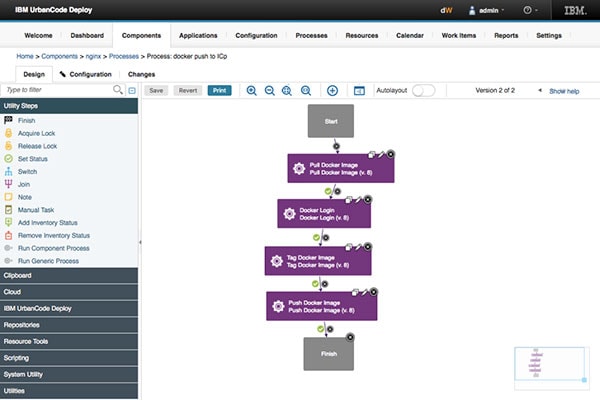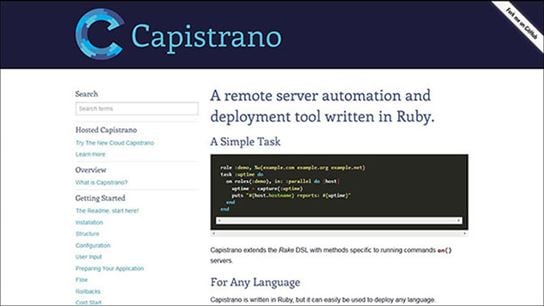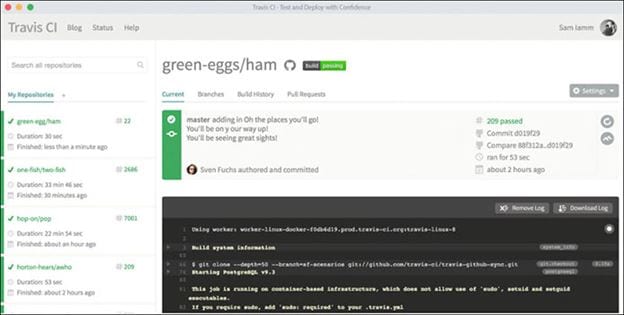Top 5 Software Deployment Tools: Streamline Deployment for Enterprises
A successful deployment makes your software more accessible to others and protects it from piracy. However, the deployment phase takes a lot of time to complete and takes developer's efforts away from what is most important: Creating the best product possible. Hence, application deployment software is a crucial phase of the development process. Software deployment programs like Windows deployment toolkits make it possible to automate the deployment process. Automating the process saves time, increases production efficiency and reduces the chances of human error. There are many software deployment tools to choose from, but we selected the five best deployment programs to choose from. As more organizations realize the benefits of automating parts of software development, it is crucial to identify the best software deployment tool on the market. We examine five of the best application deployment tools for you.
Part 1. The Best PDF Software to Deploy for Enterprise
When we talk about proficiency in terms of professional excellence and software deployment process then the answers comes in the form of PDFelement Pro. The PDF eidtor allows you to edit PDF documents like they were documents in Excel and Word. PDFelement Pro lets you edit mistakes, create annotations and perform any other important functions on your PDF documents. The PDF software gives you the freedom to create and edit PDF documents the way you please.
PDFelement Pro lets you do the following:
- Edit text, pages, and images on the PDF documents.
- Extract data from scanned PDF files.
- Perform freehand drawings on PDF documents.
- Convert PDF to other formats, like Word or Excel.
- Combine, split and create PDF documents as you like.
- Protect PDF documents with passwords and watermarks.

Part 2. Top 5 Software Deployment Tools
Software automation can be a boon or another headache to deal with if you do not choose the right application deployment tool. We review the five of the best deployment tools for software distribution, and testing, along with steps on how to deploy the tools.
1. DeployBot
DeployBot is a software deployment tool designed to work in tandem with a Github repository. The deployment tool allows developers to consistently ship code to a team. When developers are using DeployBot they can do the following:
- Deploy code without tracking it manually.
- Review files before sending the code.
- Use tools to compress code before deploying it.
- DeployBot is compatible with cloud-based repositories like Slack.
To use DeployBot, you need to cover the following steps:
Step 1. Authorize your GitHub account to connect the repository to DeploBot. Add a name to the repository and click 'Create'.
Step 2. You must create separate environments for Testing, Staging, and Production within DeployBot. You must modify environment settings, changes include choosing a name and selecting a deployment mode.
Step 3. After environments are created, you must add the server. When adding a server, you consider the Source Path (where DeployBot deploys from) and Destination path (the deployment location. Once the server is connected you are ready to deploy.

2. IBM Urban Code
Purchased in 2013 by IBM Urban Code is an automated deployment toolkit focusing on cloud and on-premise environments. Urban Code is designed to deliver feedback quickly, and deliver fast results in agile development. Urban Code offers fantastic features like an extensive ecosystem for plug-ins and hybrid cloud environment modeling.
The application deployment process consists of the following steps:
Step 1. Review systems, Install license servers and add licenses to the servers.
Step 2. Install the server, it is the user interface to customize application deployment. You can add the database as well.
Step 3. Install the agents either from the command line or the server.
Step 4. Start the server.

3. Electric Flow
A software deployment program perfectly suited for businesses, Electric Flow lets teams automate deployment and coordinate releases, no matter team size. The system comes with the metrics to measure results.
- Monitor milestones, status, environments, teams and so much more from a single screen.
- No need for rollback scripts due to environment inventory and tracking processes systems.
Interested in the application deployment software? Follow these steps to install it:
Step 1. Open the 'Welcome to Electric Flow' screen. Select the 'Express Server' installation option and click 'Next'.
Step 2. In the Server Service Account, enter all the necessary information like Username and Password. Click 'Next'.
Step 3. The Agent Service Account appears, enter all information asked for. It includes Domain and Local Account support. Click 'Next'.
Step 4. Review all the settings and click 'Back' if you need to make changes.
Step 5. Install the program. After the process is complete, click on 'Launch web browser to log in to ElectricFlow'.
Step 6. Install the program. After the process is complete, click on 'Launch web browser to log in to ElectricFlow'.

4. Capistrano
Capistrano is an open source software deployment tool programmed with Ruby. Capistrono is noted for its incredible script ability and express API.
- Deploys a web application to several machines simultaneously.
- Automate common tasks for software development.
- Automate audits for any machine.
If you are interested in using Capistrano, then follow the steps below. Please note, you must first have Ruby and RubyGems installed on the computer.
Step 1. On the terminal, run the command line: 'gem install capistrano' You can also use 'gem install capistrano-ext' to make deployments easier.
Step 2. Make sure the server has SSH access, and compliant with POSIX. SSH keys must also be set up for Mac and Windows. Capistrano is not going to work without SSH.
Step 3. Run the server.

5. Travis CI
Travis CI is the perfect windows deployment toolkit, to help you test and launch code within minutes. The deployment software is free for open source projects, and more than 900,000 projects have been tested with Travis CL.
- The software supports Linux, Mac and Windows platforms.
- Run tests simultaneously.
- Every build has a clean VM.
Travis CL works with GitHub therefore, you must make sure that your project is hosted as a repository.
Step 1. Set up Github repository and give permission for Travis CL to access code.
Step 2. Sign into Travis CL, the tool will start synchronizing with GitHub.
Step 3. Once synchronization is complete, enable the repository you want to build.
Step 4. Add a travis.yml file to your repository, the file is important because it tells Travis.CL what to do.
Step 5. Add the travis.yml file to your GitHub account, and push the trigger to create the Travis CL build.
Step 6. Check the status to find out if the build passes or fails.

Part 3. What is Software Deployment?
What is deployment? Software deployment is the process of getting your program ready to be usable by others. Software deployment is an extensive process as it involves the following:
- Building an executable file: A program that launches when the icon is double-clicked.
- Designing Icon library: The software program must feature an original icon design to make it look more professional.
- Writing help documents: Help documents make the software more accessible.
- Setting up an install wizard: An install wizard is a separate program needed to install software on another desktop PC.
- Write an uninstall program: The software program must be easy to uninstall as it is easy to install.
- Engaging in code obfuscation: The process of making code obscure, and unclear to prevent pirates from stealing the code.
Software deployment is important many developers recommend the following actions:
- It is better to realize the software and make small improvements, rather than spending time on a single massive project.
- Know the deployment audience: There are operations and production staff handling software during production.
- Software deployment is complex, best to start early in the project-lifecycle.
- Streamline UX because users are accustomed to a streamlined UI from mobile apps.
- Develop and test installation scripts, while developing the software itself.
- Software testing must be done early and often because it makes deployment easier.
Software deployment is a complicated phase in development because there are many factors to consider. However, despite its complexity, software deployment is crucial to creating software accessible to users and it crucial to perform properly. Therefore, it is best to automate software deployment. Automating software deployment allows programs to perform routine tasks without human supervision. Automation reduces the margin for mistakes from human error. The phase becomes more productive due to inefficiency and higher productivity. Software developers can focus on areas, where they bring real value to the development process. Automating software deployment leads to a stronger infrastructure base for software because scripts are constantly being tested. Developers can automate on any scale they wish. Therefore, if they want to automate the entire process or part of the process they are free to do so.





Ivan Cook
chief Editor